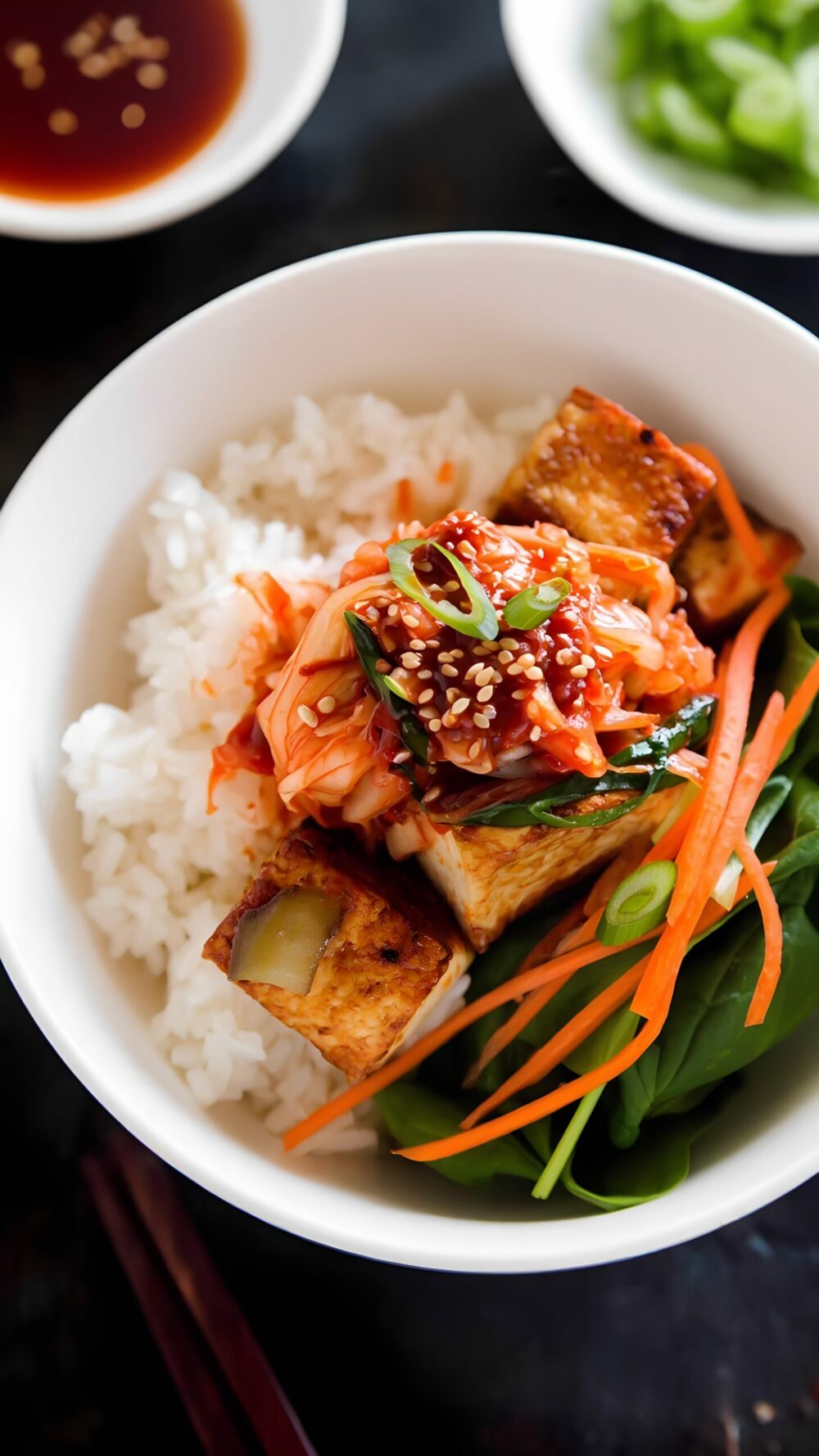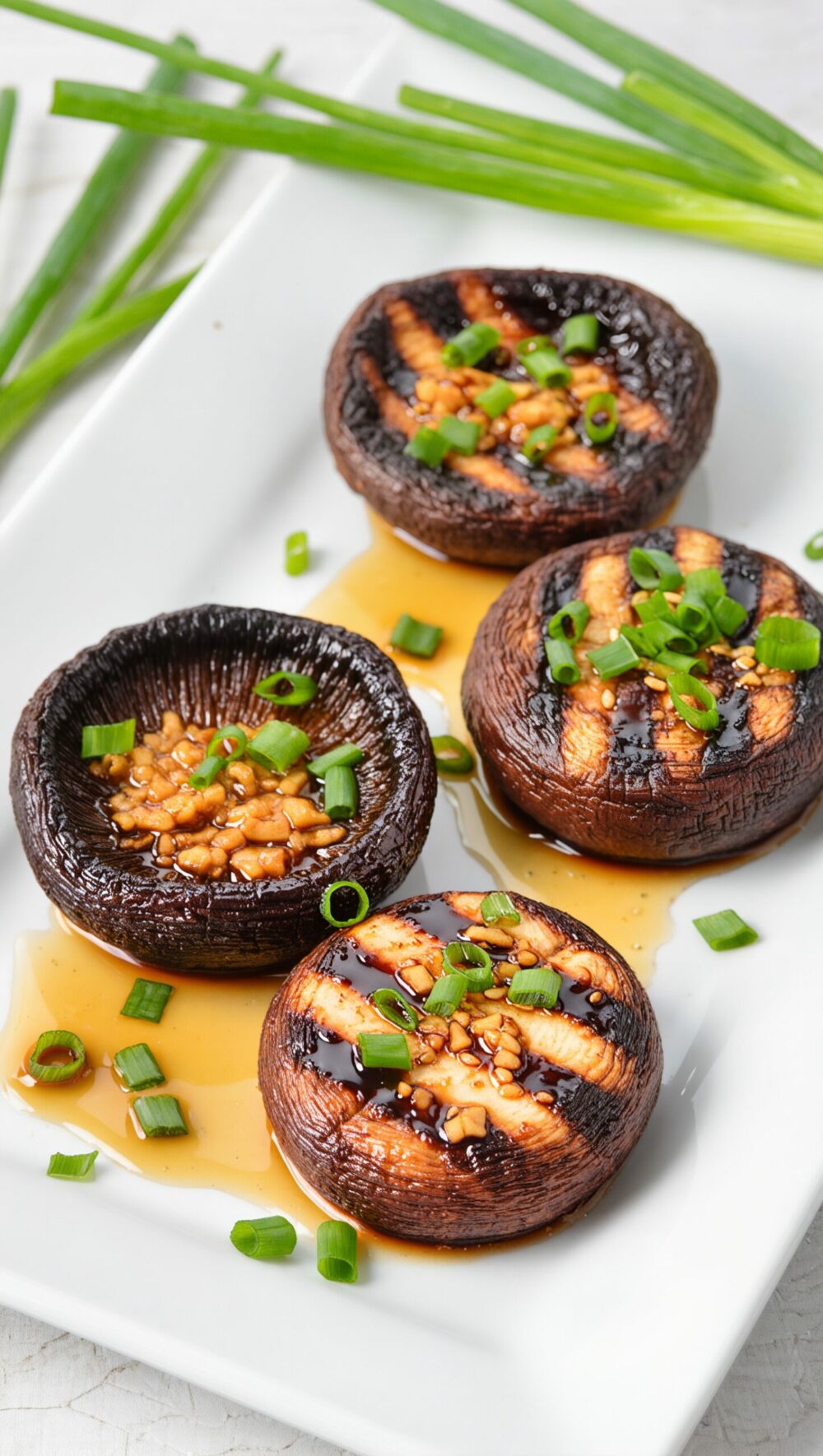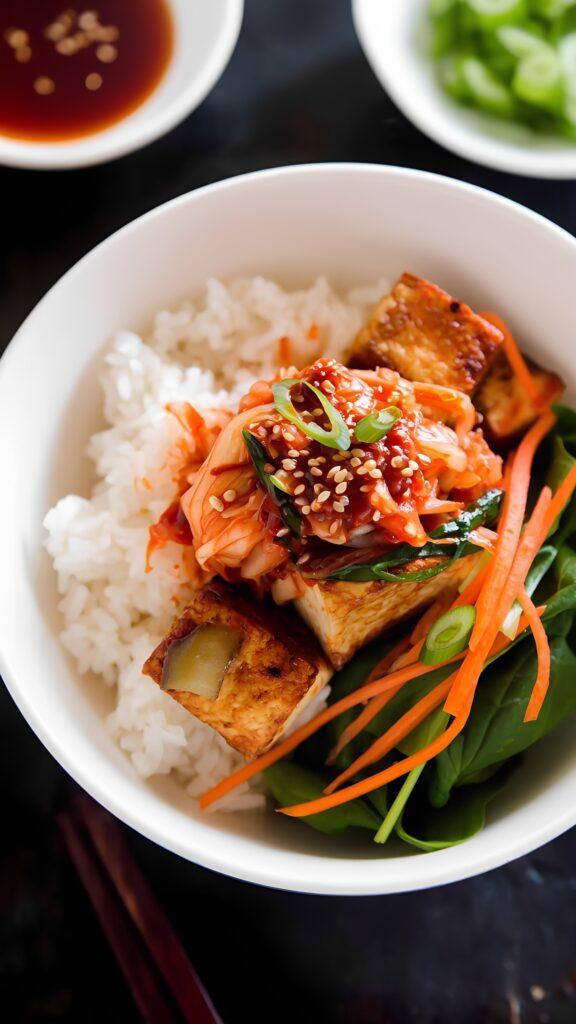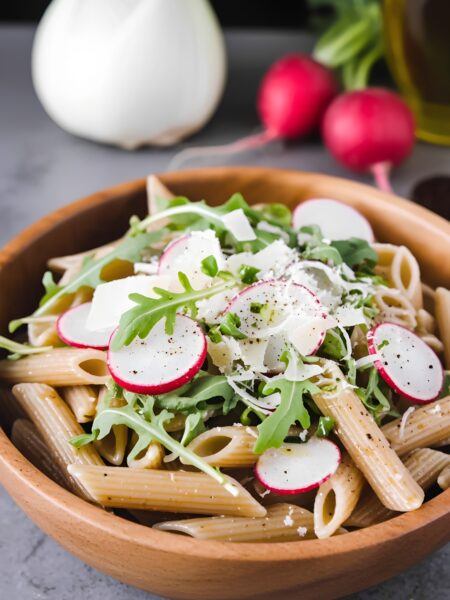Fermented Kimchi Rice Bowl is a delightful blend of spicy, tangy, and umami flavors, packed with vibrant vegetables and hearty grains. This dish is a celebration of Korean culinary traditions wrapped in a bowl of comfort food that promises to excite your taste buds.
Origin and History
Fermented foods have been a cornerstone of Korean cuisine for centuries, with kimchi reigning as the quintessential staple. Historically, kimchi was vital for surviving harsh winters, a time when fresh vegetables were scarce. The fermentation process not only preserved the vegetables but also enhanced their flavors, creating the signature spicy, sour kick that kimchi is known for. Introduced to rice bowls, it transforms a humble grain into a bold, flavor-packed dish that reflects the ingenuity and resourcefulness of Korean culinary practices.
Unique Ingredients and Flavors
This recipe marries the fiery notes of kimchi with the earthy undertones of sesame oil and the nutty richness of perfectly cooked rice. The magic lies in the balance of textures and flavors: the crispness of fermented cabbage, the softness of rice, and the gentle crunch of scallions. Each ingredient plays its part, like a symphony, where every note enhances the overall melody. The finishing touch? A runny fried egg perched atop, adding a creamy, luscious layer that binds the dish together beautifully.
Cooking Techniques
The technique of cooking rice to just the right consistency is crucial—neither too sticky nor too dry, it should hold its own against the robust kimchi. Sautéing the kimchi releases its deep, complex flavors, mingling with the fragrant sesame oil and garlic. It’s a dance of heat and time, ensuring the flavors meld perfectly without losing their individual character. This dish, though simple in its ingredients, requires patience and attention to detail, embodying the art of Korean cooking that celebrates both tradition and taste.
Healthy Fermented Kimchi Rice Bowl Recipe for Digestion
Description
This vibrant rice bowl combines fermented kimchi with fresh vegetables and savory proteins, creating a balanced, nutritious, and satisfying meal that's both traditional and innovative.
Ingredients
For the Kimchi
For the Rice
Protein Options
Vegetables
Seasoning and Garnishes
Instructions
Preparing the Ingredients
-
Gather and Prepare Your Ingredients
Start by gathering 2 cups of cooked rice, 1 cup of fermented kimchi, 1 tablespoon of sesame oil, 1 tablespoon of soy sauce, 2 chopped green onions, 1 fried egg, and a sprinkle of sesame seeds.For best results, use day-old rice which is firmer and less sticky, making it perfect for a rice bowl.
Cooking the Rice Bowl
-
Sauté Your Kimchi
Heat a pan over medium heat and add the sesame oil. Once hot, add the fermented kimchi and sauté for about 3-4 minutes until it starts to caramelize.Don't rush this step; caramelizing the kimchi adds incredible depth of flavor. -
Combine Rice and Flavorings
Add the cooked rice to the pan with the kimchi. Stir well to combine. Pour in the soy sauce and mix until the rice is evenly coated.Ensure the rice is well mixed to absorb all the savory and tangy flavors of the kimchi. -
Finish with Toppings
Transfer the rice and kimchi mixture into a bowl. Top it with the fried egg, chopped green onions, and a sprinkle of sesame seeds for garnish.For an extra kick, drizzle a bit of kimchi juice from the jar over the top.
Serving Suggestions
-
Serve and Enjoy
Serve your kimchi rice bowl hot, savoring the blend of spicy, tangy, and savory notes with each bite.Pair it with a cold beverage to balance the heat and enhance the meal experience.
Note
For a twist on the classic fermented kimchi rice bowl, consider these notes: 1. **Rice Selection**: Opt for short-grain rice for its stickier texture, which complements the spicy tang of kimchi perfectly. If you prefer a nuttier flavor, use brown rice or quinoa. 2. **Kimchi Variations**: While napa cabbage kimchi is traditional, radish kimchi can add a crunchy texture. Make sure your kimchi is well-fermented for an intense flavor punch. 3. **Protein Options**: Top your bowl with a poached egg for creaminess, or add sliced grilled tofu for a vegan alternative. Leftover rotisserie chicken can also bring a savory depth. 4. **Toasting Sesame Seeds**: Toast sesame seeds until golden to enhance their nutty flavor. This step elevates the dish with a subtle crunch. 5. **Balancing Flavors**: A drizzle of sesame oil and a splash of soy sauce can balance the sourness of the kimchi and the earthiness of the rice. 6. **Fresh Additions**: Consider adding thinly sliced cucumbers or scallions for freshness and a pop of color. 7. **Garnishing**: Finish with a sprinkle of chopped nori or a dash of gochugaru (Korean chili flakes) for an extra layer of spice. 8. **Storage**: Store leftovers in an airtight container in the refrigerator for up to two days. Reheat gently to maintain texture integrity. 9. **Customizations**: Experiment with adding pickled vegetables or a spoonful of gochujang (Korean chili paste) to tailor the heat to your liking. These notes aim to enhance your kimchi rice bowl experience, offering both traditional and innovative elements to explore.















